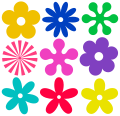| Author | Title | Published |
|---|
| Stanislav Grof | LSD Psychotherapy: The Healing Potential of Psychedelic Medicine | 1975 |
| Joan Halifax | The Human Encounter With Death | 1977 |
| Peter Stafford | Psychedelics Encyclopedia | 1977 |
| Stanislav Grof, Christina Grof | Beyond Death: The Gates of Consciousness | 1981 |
| Albert Most (Ken Nelson) | Bufo Alvarius: the Psychedelic Toad of the Sonoran Desert | 1984 |
| Stanislav Grof | Beyond the Brain: Birth, Death, and Transcendence in Psychotherapy | 1985 |
| Alexander Shulgin, Ann Shulgin | PiHKAL (Phenethylamines I Have Known and Loved: A Chemical Love Story) | 1990 |
| Stanislav Grof, Hal Zina Bennet | The Holotropic Mind: The Three levels of Human Consciousness and How They Shape Our Lives | 1992 |
| Jonathan Ott | Pharmacotheon: Entheogenic Drugs, Their Plant Sources and History | 1993 |
| Nicholas Saunders | E for Ecstasy | 1993 |
| Alexander Shulgin, Ann Shulgin | TiHKAL (Tryptamines I Have Known and Loved: The Continuation) | 1997 |
| Myron Stolaroff | The Secret Chief | 1997 |
| Stanislav Grof | The Cosmic Game: Explorations of the Frontiers of Human Consciousness | 1998 |
| Rick Strassman | DMT: The Spirit Molecule | 2000 |
| Daniel Pinchbeck | Breaking Open the Head: A Psychedelic Journey into the Heart of Contemporary Shamanism | 2003 |
| Peter Stafford | Psychedelics | 2003 |
| Stanislav Grof | When the Impossible Happens: Adventures in Non-ordinary Realities | 2006 |
| Alexander Shulgin, Tania Manning, and Paul F. Daley | The Shulgin Index, Volume One: Psychedelic Phenethylamines and Related Compounds | 2011 |
| James Fadiman | The Psychedelic Explorer’s Guide: Safe, Therapeutic, and Sacred Journeys | 2011 |
| Michael Pollan | How to Change Your Mind: What the New Science of Psychedelics Teaches Us About Consciousness, Dying, Addiction, Depression, and Transcendence | 2018 |
| Mike Jay | Mescaline: A Global History of the First Psychedelic | 2019 |
| Rachel Nuwer | I Feel Love: MDMA and the Quest for Connection in a Fractured World | 2023 |
